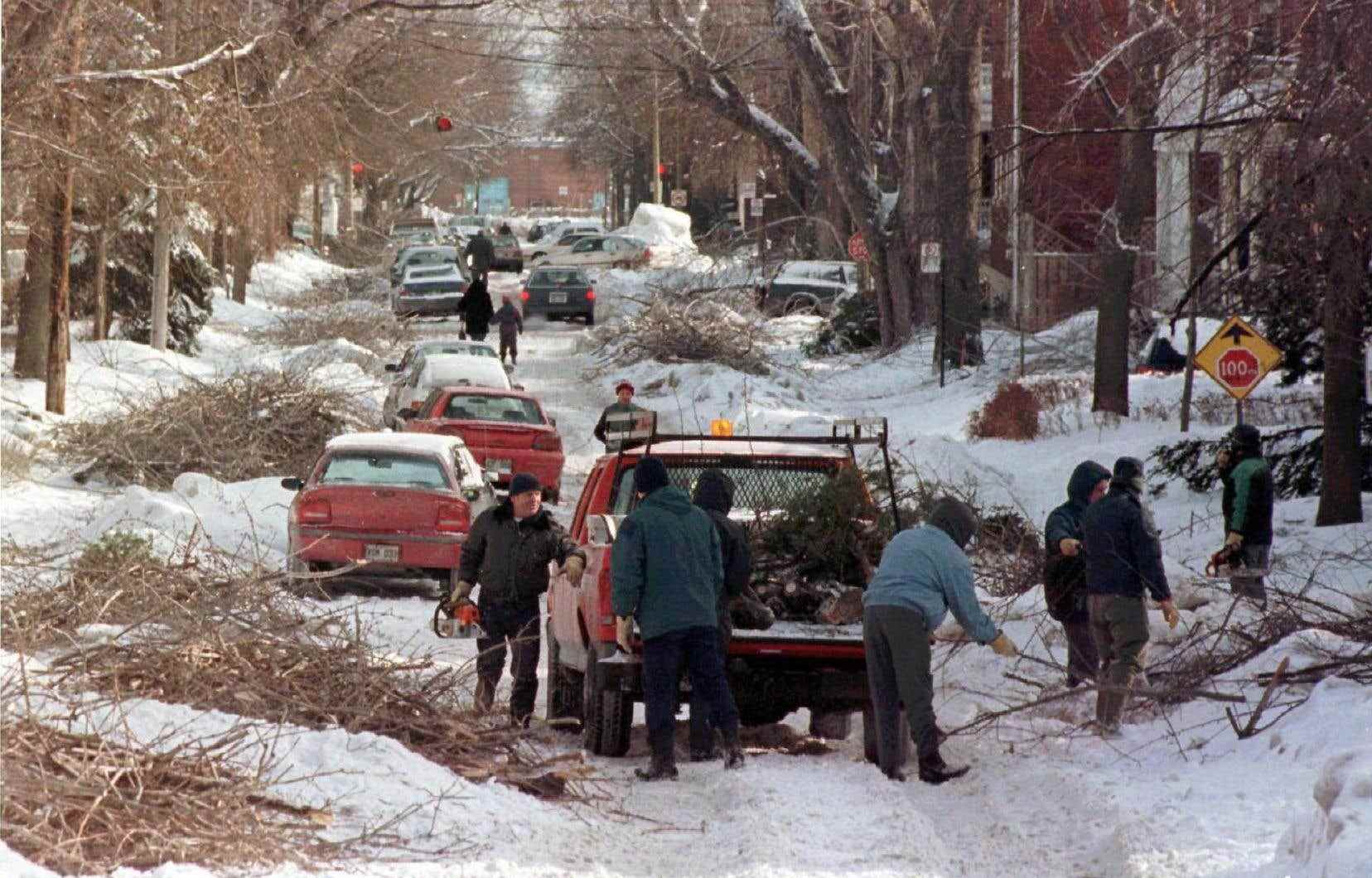On January 6, 1998, Quebec woke up to a nightmare of ice. The freezing rain that has been falling for two days has knocked down steel pylons and plunged hundreds of thousands of people into darkness. In the government and at Hydro-Québec, we suddenly take the measure of the catastrophe that is looming, just like in the newsrooms. Twenty-five years later, journalists tell how they covered this crisis which marked the spirits.
Like most Quebecers, Robert Plouffe remembers the 1998 ice storm like it was yesterday. If he only lost electricity for about fifteen hours in his house in Sainte-Julie, he spent whole weeks criss-crossing the towns most affected by the disaster in order to report, for the news bulletin of TVA, the stories of the citizens they met in the field.
“The news is always slow after the holidays, and as a journalist, we often look for subjects. That winter, we had plenty of raw materials,” recalls the former journalist, now employed at Retraite Québec.
It will still take a few days before TVA fully seizes the news. Quebecers are used to the vagaries of winter and there was no indication that this freezing rain would paralyze the south of the province for weeks in certain regions.
The black triangle
It was when electricity pylons collapsed under the weight of the ice, on January 6, that TVA Nouvelles journalists were mobilized to cover the events, recalls Robert Plouffe. Early that Tuesday, the journalist was sent to the famous black triangle, this area between the towns of Granby, Saint-Hyacinthe and Saint-Jean-sur-Richelieu, in Montérégie, where the situation was the most catastrophic.
There he meets worried farmers. Suddenly, in the middle of an interview, pylons collapse “like dominoes” around them. “In the report from the time, I can be heard shouting ‘Check, Check, look, look’ at my fellow cameraman. […] The images were so striking. »
At To have to also, it took a few days before the ice storm attracted attention. “The first few days, we were really amazed to see the city frozen in crystal. That’s after it got bad because the freezing rain kept falling. The branches broke, the high voltage lines fell and the transformers exploded,” recalls Judith Lachapelle, who had left the benches of the university and had recently been working for the daily newspaper.
On January 7, the young supernumerary journalist signed the first of a long series of headlines. “We had just gone from news item to crisis”, underlines the one who works today at The Press. Throughout the month of January, she will be at the forefront of the crisis, gradually supported by other journalists in the room who will be quickly mobilized to cover the ice.
Remarkable stories
There were plenty of stories to tell. Between the daily press conferences of the Premier of Quebec, Lucien Bouchard, and the CEO of Hydro-Quebec, André Caillé, we talked about the daily lives of citizens without electricity, improvised shelters, mutual aid between neighbors, the hard work of Hydro-Québec employees, the intervention of the army or the overflows in hospitals. We also reported the death toll – at least 30 – across the province, the wounded, the material losses.
“What touched me the most was seeing some producers completely lose everything,” explains Robert Plouffe. He particularly remembers this maple syrup producer who testified to the damage of the ice storm in his maple grove. “We’re in an interview and the poor man suddenly says to me: ‘Don’t talk any more, listen! “What we heard was the sound of branches blowing by the winds, we heard them cracking, breaking, falling. And he started crying. Episodes like that are very moving. »
Host Sophie-Andrée Blondin remembers the many calls from lonely, depressed, sometimes distressed citizens. At the time, she was hosting Radio services Montérégie, created especially by Radio-Canada – on its old AM frequency – for listeners on the South Shore, harder and longer affected by the crisis. Every day, 24 hours a day, information was provided on the evolution of the situation and a forum was offered to citizens.
Support live
“People called because they needed help, needed to talk, to testify about what they were going through. They were cold, they were not well. They needed advice, reassurance,” says Sophie-Andrée Blondin.
She particularly remembers this man who told her live how he had fitted extra heating at home with the means at hand. “I felt like what he was doing was dangerous. I had to encourage him to confide while making it clear to the people listening that his method had to be taken with a grain of salt,” she recalls. “It was the biggest difficulty of live: since we were in live accompaniment mode, we didn’t have the luxury of a time filter. »
Nevertheless, she has fond memories of this experience, which was her “school of animation”.
Judith Lachapelle also has “intoxicating” memories of this event, which was a springboard for her career. “At that time, I will go from supernumerary to very part-time, to full-time. It was the start of my professional life. »
“It’s unprecedented, historic, it marked all of Quebec. As a journalist, we like to be able to say “not only was I there, but I was also a witness and I reported the events,” says Robert Plouffe, a touch of pride in his voice.
